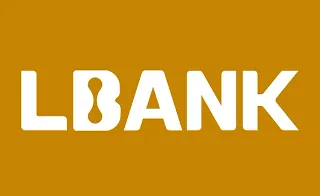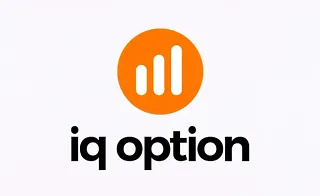Consequent Encroachment (CE) focuses on a level where the price is highly likely to react. This concept is crucial, especially in analyzing Fair Value Gaps (FVGs) and other trading structures.
Traders can use this approach to identify optimal entry and exit points in the market.
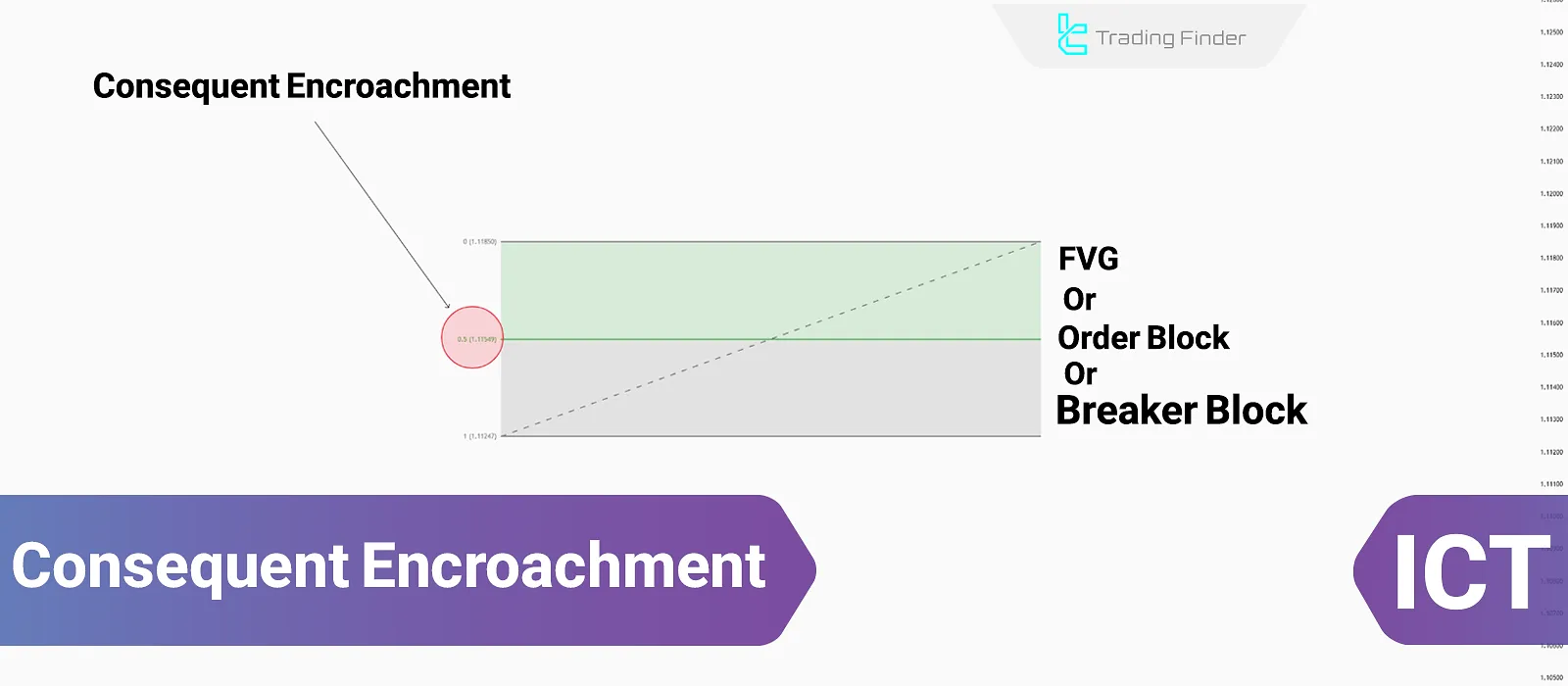
What is ICT Consequent Encroachment (CE)?
CE refers to the 50% level of a trading structure, such as the midpoint of a Fair Value Gap (FVG) or other ICT PD Arrays. This level is considered the “midpoint” of a gap or a balanced price zone where the price is most likely to react.
Unlike full gap fills, CE allows traders in the forex market to take action before an FVG or Order Block is filled, offering an approach for anticipating price reversals or trend continuation.
Advantages and Disadvantages of CE
Like other concepts in ICT style, Consequent Encroachment has its own strengths and limitations:
Disadvantages | Advantages |
Potential for false signals in lower timeframes | Identifies key market levels |
Requires advanced experience for accurate usage | Improves risk management and capital efficiency |
Price may ignore CE levels at times | Applicable across all markets and timeframes |
Complex for beginner traders | Enhances trading precision |
How to Identify Consequent Encroachment (CE)?
To identify CE in an FVG structure, follow these steps:
- Locate the Fair Value Gap (FVG): Identify a bullish or bearish FVG on the chart;
- Use the Fibonacci Tool: Apply Fibonacci from the highest point to the lowest point of the FVG;
- Mark the 50% Level: The 50% Fibonacci level represents the Consequent Encroachment, which is an entry or exit point.
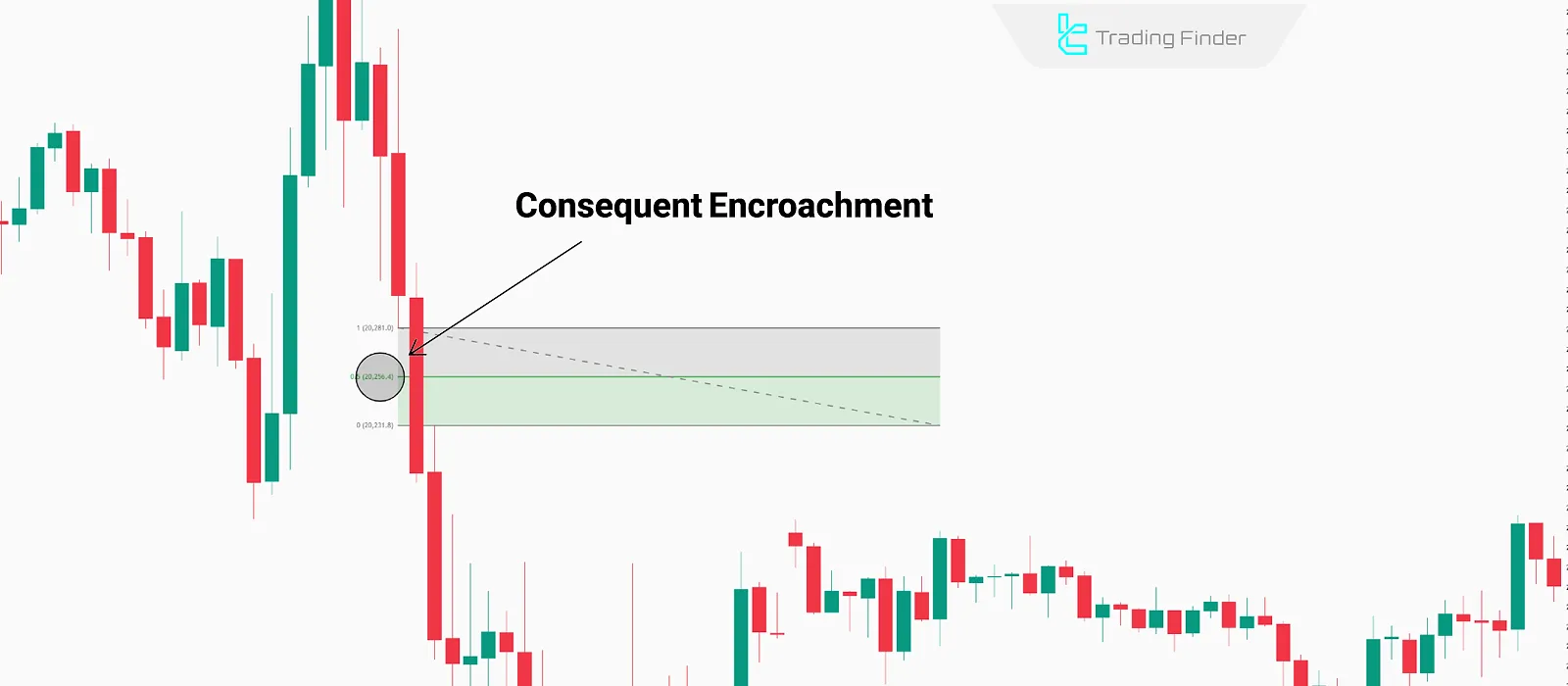
An example of a bearish Consequent Encroachment in a Fair Value Gap, identified with the Fibonacci tool
Below is an example of a bullish CE:
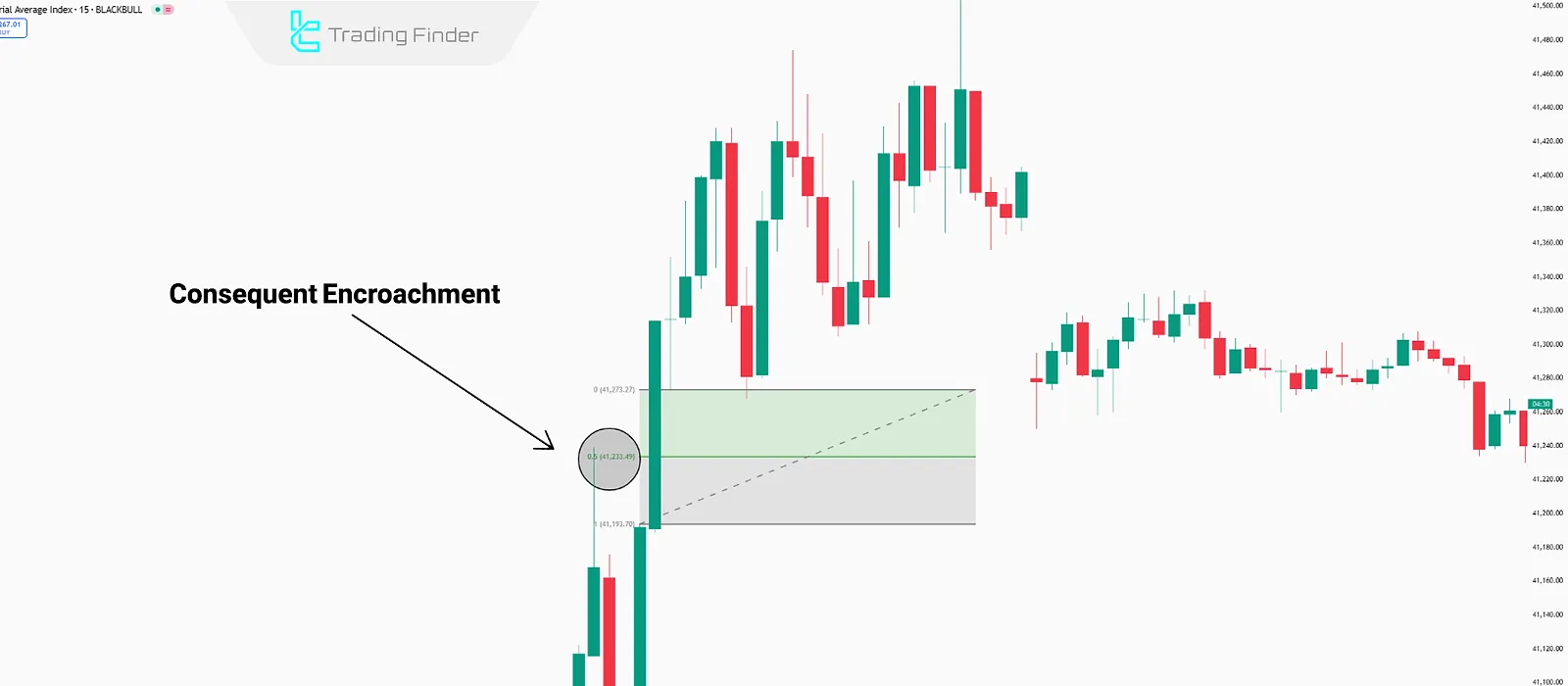
How Does CE Apply to Other ICT Concepts?
Apart from Fair Value Gaps (FVGs), Consequent Encroachment is also applicable in the following ICT structures:
- Order Blocks (OBs): CE within an Order Block acts as a price equilibrium point;
- Breaker Blocks (BBs): CE helps identify critical levels in Breaker Blocks;
- New Week Opening Gaps (NWOGs): Weekly opening gaps contain a CE level that acts as a liquidity magnet.
Key Points for Identifying and Trading with CE
To trade using Conceptual Equilibrium (CE), combine it with liquidity shifts and structural changes and focus on higher timeframes for greater reliability
- Combining with Other Tools: CE works best when integrated with other trading concepts;
- Higher Timeframes: CE levels are more reliable in higher timeframes as they filter out the noise;
- Risk Management: CE alone is insufficient for trade execution; combining it with other ICT elements is essential to avoid losses.
Practical Example of Trading with Consequent Encroachment
Below is a real-world example demonstrating how price reacts to CE in an uptrend on USD/JPY chart, where price reaches Consequent Encroachment and reverses downward.
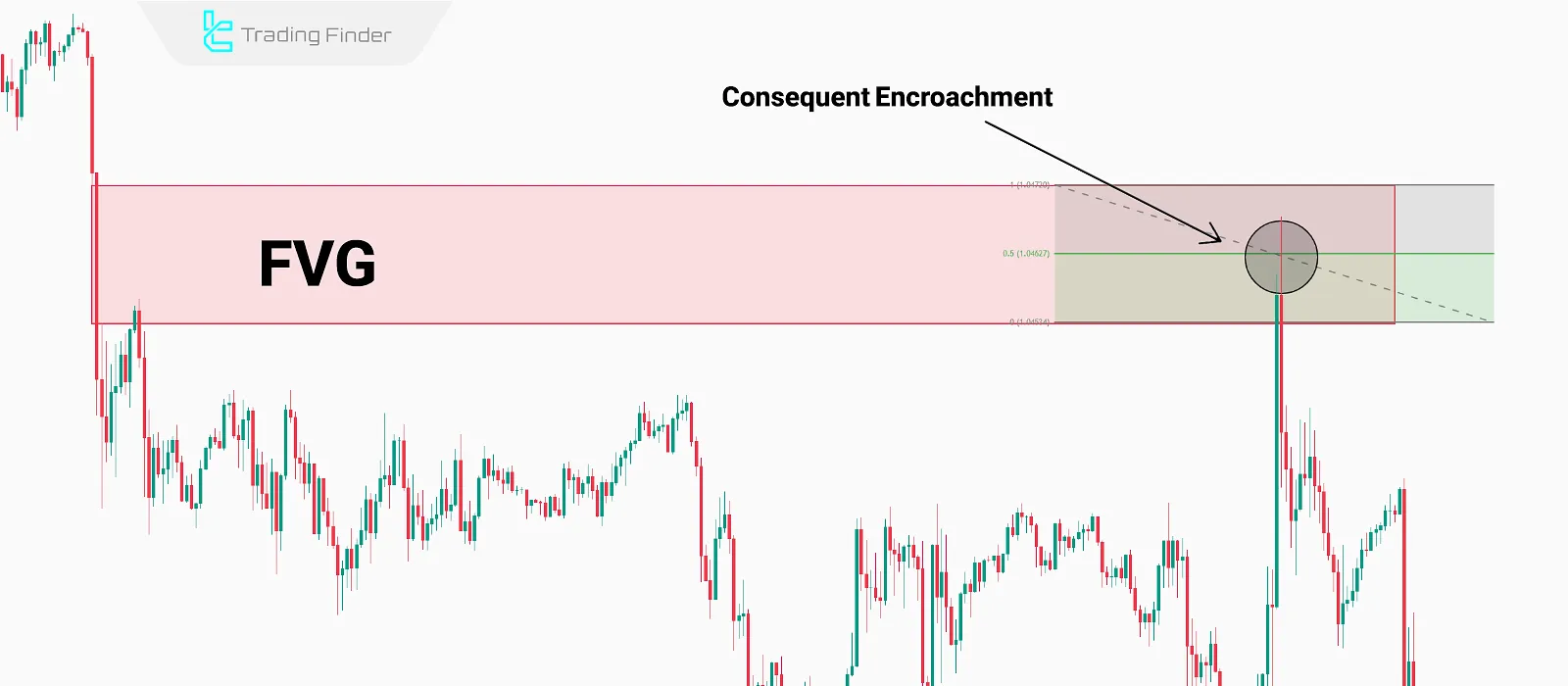
Conclusion
The ICT Consequent Encroachment (CE) is a refined tool for optimizing price zones in ICT structures such as FVGs and Order Blocks. By dividing key market areas into precise sections, CE enhances entry accuracy and trade execution.
